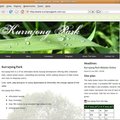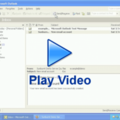How To Choose An ISP |
ADSL, cable, dialup, bandwidth, uploads, downloads, modems, splitters, 10Mbps, peering... what the heck is all this stuff? Welcome to the ISP (Internet Service Provider) marketplace, where confusion is the order of the day and most consumers don't know what they are buying.
How To Choose An ISPHow does the 'Net work?
Computers communicate using electromagnetic waves such as radio waves, microwaves, visible light or infrared radiation. Electromagnetic waves can be broadcast through space (e.g. radio, wireless and satellite), or unicast using appropriate cabling such as copper telephone lines, copper cable, optic fibres, and even power lines.
The number of different ways engineers have come up with to enable electronic communications is truly astonishing. There is even a specification for Internet over Carrier Pidgeon - although this turned out to be an April fools joke.
Software and hardware standards combine to enable your computer to use whatever physical networks are available to communicate with other machines as you require. ISPs are generally vendors for the physical network described above.
Current Technology
In Australia, most end users are limited to accessing the Internet via copper-based technology such as dialup, ADSL or cable. Wireless access is still emerging, and plans for optic fibre only seem to be raised around election times.
Dialup and ADSL technology both use the Telstra-owned twisted-pair copper lines which were installed for the original Plain Old Telephone System (POTS). Every home or office has a dedicated line to the local telephone exchange (that's a lot of cables!) which is then connected to the Internet using higher bandwidth technologies.
Fundamentally, the difference between dialup and ADSL is that dialup is designed to be backwards compatible with the voice network, making it painfully slow. ADSL technology drops this requirement and after some relatively minor modifications to the physical circuit, can use the full capacity of the copper line.
ADSL speeds decrease the further you are away from the telephone exchange (DSLAM). ADSL2 and ADSL2+ offer higher speeds, but their performance decreases more rapidly. The very high speeds are only available if you are very close to the exchange.
Cable Internet is delivered on the same line as Cable TV services and there are two networks in Australia: Optus and Telstra. Cable is also a copper technology and thus has similar performance characteristics to ADSL. The main difference is that a single cable is shared by all the users in a neighbourhood. Additionally, you are not forced into paying line rental to Telstra which is inevitable, one way or the other, with ADSL plans.
Theoretical limits
This table shows the theoretical bandwidth limits of each technology and the factors which can affect the data rate. Actual data rates would only ever reach about 75% of these rates due to the overheads required for assembling and disassembling data.
| Download | Upload | Main factor | |
| dialup | 56kb/s total | speed of modem | |
| ADSL | 8Mb/s | 1Mb/s | distance from exchange |
| ADSL2 | 12Mb/s | 3.5Mb/s | distance from exchange |
| ADSL2+ | 24Mb/s | 1Mb/s | distance from exchange |
| Cable | 10Mb/s total | number of users online | |
ISPs often limit the speeds of their offerings depending on how much you pay per month.
Some tips for choosing an ISP
- Try to understand the fundamentals. The main reason for doing this is that you won't feel like you're being ripped off by a jargon-wielding salesman. Keep reading and reading until you're satisfied with your grasp on the terminology.
- Know bits from bytes. Network speeds are always quoted in bits (e.g 10Mb/s) whereas file sizes and disk space is usually quoted in bytes (e.g. 3MB). 1 byte = 8 bits, so 10Mb/s is only 1.25MB/s.
- Find out where your telephone exchange is. If you are choosing an ADSL technology, try to find out where your local exchange is, and measure the distance to your house. Internode provides a graph of expected ADSL speeds based on your distance from the exchange.
- Consult your neighbours or friends. Unless they have a really crappy computer, you can probably get a pretty good idea of an ISP's performance by asking a friend or neighbour how it works for them. Be sure to get several opinions though.
- Compare ISPs at Whirlpool. The whirlpool.net.au website has a great tool for comparing the offerings of various ISPs.
- Choose an uncapped plan. Some ISPs will charge you per megabyte if you exceed your monthly download limit. Others will simply slow down your connection. Wherever possible, choose the latter so you don't accidentally rack up a horrific bill.
| « What is an Internet Telephone? | Back to Blog |



